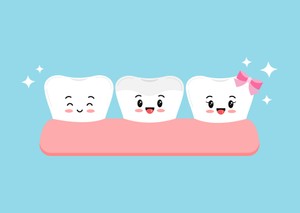Blog
Dental sealants are a preventive treatment aimed at safeguarding the chewing surfaces of teeth from cavities and decay, especially in children.
So, what are dental sealants? Dental sealants are a preventive treatment aimed at safeguarding the chewing surfaces of teeth from cavities and decay, especially in children. These thin, protective coatings are commonly applied to the back teeth, where food particles and bacteria tend to accumulate. By forming a barrier against plaque and acids, dental sealants significantly contribute to maintaining oral health. Understanding what dental sealants are is crucial for proactive dental care.
Overview of Dental Sealants
Dental sealants are designed to protect teeth from decay, particularly in children and teenagers. These thin plastic coatings are applied to the chewing surfaces of the back teeth, where cavities are most likely to develop. The primary function of dental sealants is to create a barrier against food particles and bacteria, thereby reducing the risk of tooth decay and promoting better oral health. But what are dental sealants made of? They are typically composed of composite resin or glass ionomer, both of which are durable and safe for children.
Sealants work by filling in the tiny grooves and pits on the surface of the teeth, making them smoother and easier to clean. This protective layer effectively blocks out plaque and food debris, which are common culprits in the development of cavities. The application process is quick and painless, typically completed in just one visit to the dentist. Once in place, sealants can last for several years, but regular dental check-ups are essential to ensure their effectiveness and to identify any areas that may need reapplication.
Common materials used for dental sealants include composite resin and glass ionomer. Composite resin sealants are often preferred for their aesthetic appeal, as they can be matched to the natural color of the teeth. Glass ionomer sealants, on the other hand, release fluoride, providing additional protection against decay. By answering the question, “What are dental sealants made of?” can help you make informed decisions about your child’s dental health.
Benefits of Dental Sealants
Dental sealants serve as a proactive measure in children’s oral health, offering a protective barrier that significantly reduces the risk of cavities and tooth decay. By sealing the grooves and crevices on the chewing surfaces of the back teeth, sealants prevent food particles and bacteria from settling in hard-to-reach areas, effectively lowering the likelihood of cavities developing.
In addition to their preventive benefits, dental sealants are also a cost-effective solution for families. The expense of treating a cavity can be significantly higher than the initial investment in sealants. By opting for sealants, parents can save money in the long run and avoid the need for more invasive dental procedures that may arise from untreated decay.
The impact of dental sealants on children’s dental health is profound. Establishing a strong foundation for oral hygiene during childhood is crucial, as it sets the stage for a lifetime of healthy teeth. Sealants not only protect against immediate concerns like cavities but also contribute to overall confidence and well-being. Children with healthy teeth are more likely to engage in social activities without the worry of dental issues, making dental sealants an essential component of preventive care.
Application Process
The application of dental sealants is a straightforward procedure designed to protect your child’s teeth from cavities. It begins with a thorough cleaning of the teeth to remove any plaque or food particles. Once the teeth are clean, the dentist applies a special gel to the surfaces that will receive the sealant. This gel helps the sealant bond effectively to the tooth surface.
After a few moments, the gel is rinsed off, and the teeth are dried thoroughly. The dentist then applies the sealant, a thin plastic coating, directly onto the grooves of the teeth. To ensure proper adhesion, a light may be used to cure the sealant, hardening it in place. The entire application process generally takes about 20 to 30 minutes, making it a quick and efficient visit.
During your dental visit for sealants, your child can expect a comfortable experience. Most children tolerate the procedure well, and it is painless. The dentist will explain each step to both you and your child, ensuring everyone is informed and at ease. After the application, your child can resume regular activities right away, with only a few precautions regarding eating and drinking for a short period. By choosing dental sealants, you are taking a proactive step in maintaining your child’s oral health.
Who Should Get Dental Sealants?
Dental sealants are a preventive measure that can significantly benefit children’s oral health. The recommended age for sealant application typically falls between the ages of 6 and 14 when molars emerge and are most vulnerable to cavities. However, it’s essential to consult with a pediatric dentist to determine the best timing for your child.
Several factors influence the decision to use dental sealants. These include the child’s risk of developing cavities, their oral hygiene habits, and the presence of deep grooves in their teeth that can trap food particles and plaque. Children prone to tooth decay or with a family history of dental issues are often prime candidates for sealant application.
Populations that benefit the most from dental sealants include children and adolescents, particularly those who may not have consistent access to dental care or those who struggle with maintaining good oral hygiene. Additionally, children with special needs or those undergoing orthodontic treatment may also find sealants advantageous as they can help protect their teeth during crucial developmental stages. By knowing what dental sealants are and who should receive them, parents can make informed decisions to support their child’s dental health.
Maintenance and Longevity of Sealants
Dental sealants are a highly effective preventive measure designed to protect the chewing surfaces of molars from cavities. Typically, sealants can last anywhere from 5 to 10 years, depending on various factors such as oral hygiene habits and wear and tear from chewing. Regular dental check-ups can help monitor the condition of sealants over time.
It’s important to be aware of the signs that your child’s dental sealants may need replacement. If you notice any visible wear or chipping, or if food particles seem to get trapped more easily in the grooves of the teeth, it may be time for an evaluation. Additionally, if your child experiences sensitivity in the sealed teeth, this could indicate that the sealant is no longer effective.
To ensure the longevity of dental sealants, good oral hygiene practices are essential. Encourage your child to brush their teeth twice a day with fluoride toothpaste and to floss daily. Regular visits to the dentist will also help maintain the integrity of the sealants, as dental professionals can assess their condition and provide timely replacements if necessary. By following these tips and staying proactive about dental care, you can help your child enjoy the benefits of sealants for years to come.





